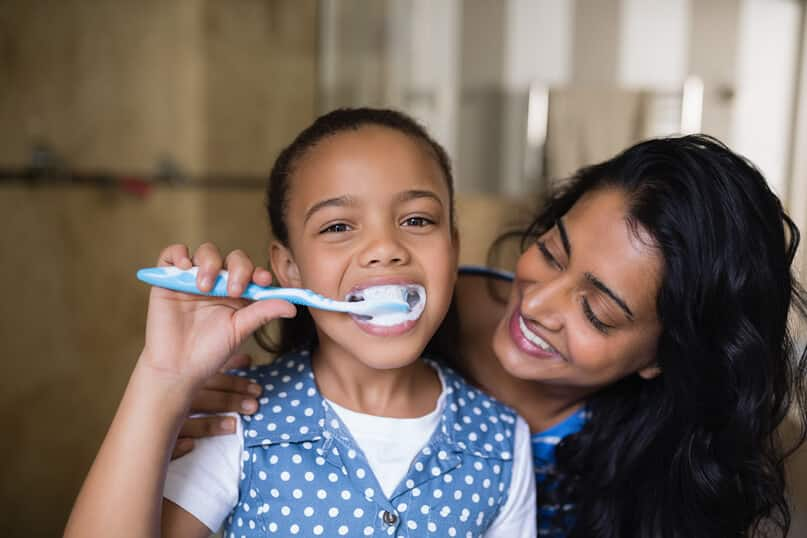Many parents become concerned about infant oral care once the first tooth erupts. But think of all the objects your infant investigates and puts in their mouth on a daily basis. You can establish a regimen of infant oral care early on, even before that first tooth sprouts. Choosing an infant toothbrush makes it easy to practice good oral care from the start.

Choosing An Infant Toothbrush
The Importance of Infant Oral Care
You should begin oral care as soon as your baby's born. Starting now can help reduce or prevent cavities later. Gently wipe your baby's gums with a moist, clean gauze pad or washcloth.
Your baby isn't born with cavity-causing bacteria. A report published in the Journal of Orofacial Sciences highlights that cariogenic or decay-causing bacteria are typically transmitted from the mother or care-giver to child by behaviours that directly pass saliva, such as sharing a spoon when tasting baby food, cleaning a dropped pacifier by mouth, or wiping the baby's mouth with saliva. If possible, avoid using your finger as a toothbrush, feeding babies with your spoon, or cleaning off your baby's pacifier in your mouth.
You should schedule your baby's first dental appointment when the first tooth erupts. During that visit, your dental professional will evaluate your child's mouth and teeth development.
Choosing An Infant Toothbrush
The Indian Dental Association recommends that once your child's baby teeth erupt, brush them with a small soft- bristled toothbrush and a pea- sized amount of toothpaste after feedings and at bedtime. Brushing is essential because decay and cavities can happen as early as your child's first tooth. There are toothbrushes made for infants and toddlers. They are small and have extra-soft bristles, so they won't irritate your baby's gums. Your dental professional will guide you regarding the best toothbrush and toothpaste to use. Here are some options to consider:
- Teething brushes for babies and finger toothbrushes for toddlers are great for soothing sore gums during teething. Refrigerate them for added relief. Plus, it helps your baby or toddler get used to toothbrushing.
- Choose the right size for your child. Select a toothbrush that fits comfortably in your child's mouth. Infant and toddler toothbrushes usually have smaller, slightly rounder heads.
- Select a baby toothbrush style that has a chunkier handle and a no-slip grip. This helps with manual dexterity and makes it easier for your growing baby to grab and get used to holding.
- Electric toothbrushes are a great idea as your child grows. You can find musical or cartoon character themed kid versions for extra fun that will lead to at least twice daily brushing and on the way to a good oral care regime.
When to Add Toothpaste
For children older than 2 years, brush their teeth with a pea-sized amount of fluoride toothpaste. Be sure they spit out the toothpaste. The Indian Dental Association recommends that until you are comfortable that your child can brush on his or her own, continue to brush your child's teeth twice a day with a child-size toothbrush and a pea-sized amount of fluoride toothpaste. Use a tiny smear (grain of rice) of fluoride toothpaste for children younger than three years old.
It's never too early to start a good oral care routine. Start right away with your baby. Use the right toothbrush and the right amount of toothpaste. You will enjoy many firsts with your baby, including that first tooth. Make sure to contact your dental care professional for an appointment as soon as it comes in.
This article is intended to promote understanding of and knowledge about general oral health topics. It is not intended to be a substitute for professional advice, diagnosis or treatment. Always seek the advice of your dentist or other qualified healthcare provider with any questions you may have regarding a medical condition or treatment.





